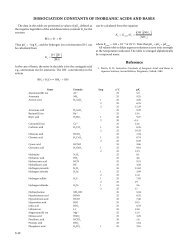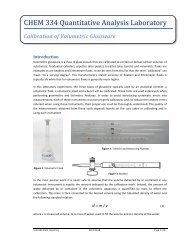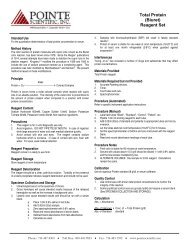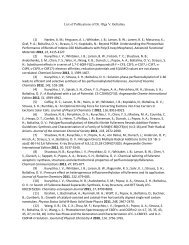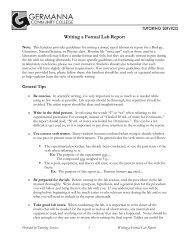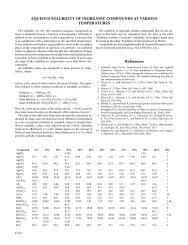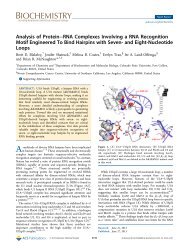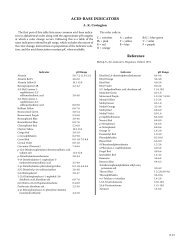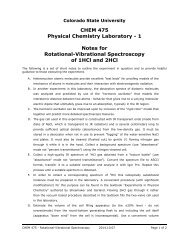8453 UV-visible system - operator manual.pdf
8453 UV-visible system - operator manual.pdf
8453 UV-visible system - operator manual.pdf
- No tags were found...
You also want an ePaper? Increase the reach of your titles
YUMPU automatically turns print PDFs into web optimized ePapers that Google loves.
Good Measurement PracticesGeneral Considerationsa solvent for the analyte, and on experimental conditions. Table 1 listscommon solvents and the lower limit of their useful wavelength range.Table 1Lower Limit of <strong>UV</strong> Transmission for Some Common SolventsLower LimitSolvent180–195 nm Sulfuric acid (96%)WaterAcetonitrile200–210 nm Cyclopentanen-HexaneGlycerol2,2,4-TrimethylpentaneMethanol210–220 nm n-Butyl alcoholIsopropyl alcoholCyclohexaneEthyl ether245–260 nm ChloroformEthyl acetateMethyl formate265–275 nm Carbon tetrachlorideDimethyl sulfoxideDimethyl formamideAcetic acid280–290 nm BenzeneToluenem-XyleneAbove 300 nmPyridineAcetoneCarbon disulfideWARNINGMany of the solvents in Table 1 are hazardous. Be sure you fullyunderstand their properties before using them.When using volatile solvents such as acetone or methylene chloride, makesure that the sample cell is stoppered. Evaporation of a solvent can change48




